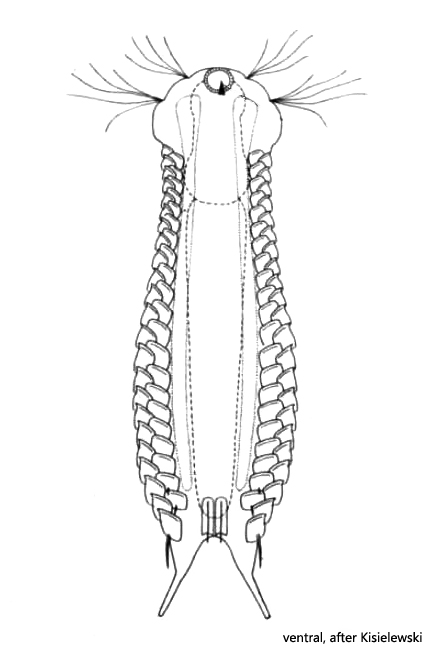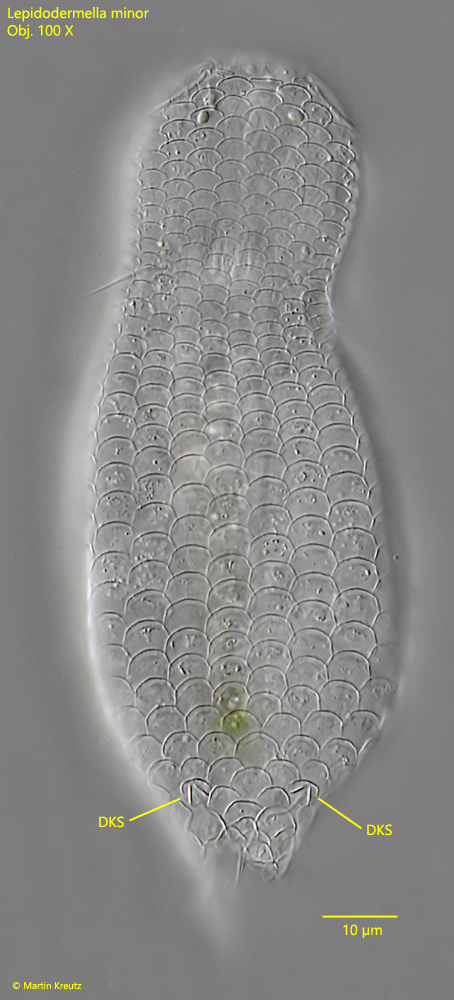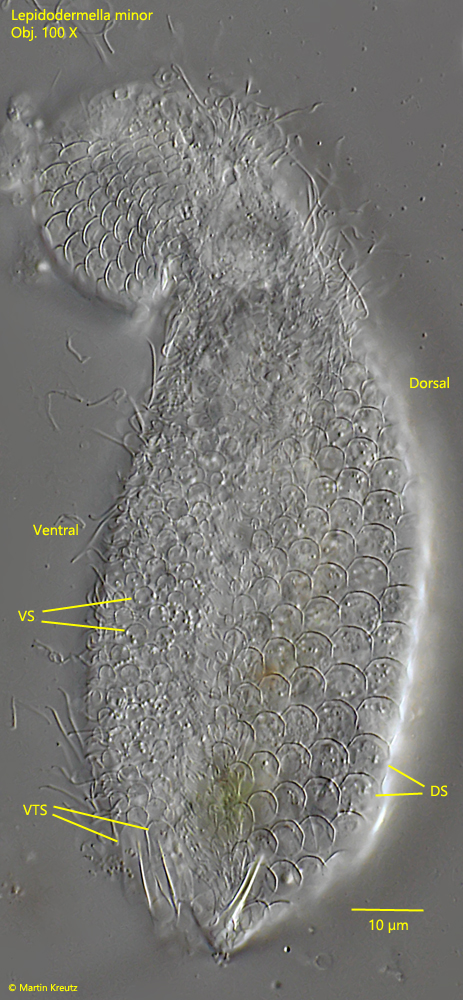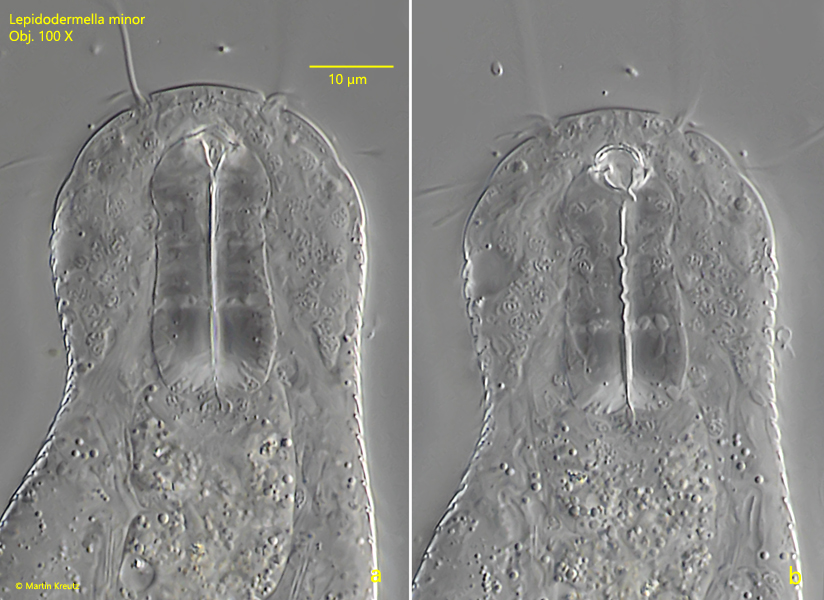Lepidodermella minor (Remane, 1936)
Most likely ID: n.a.
Synonym: Lepidodermella minus
Sampling location: Simmelried
Phylogenetic tree: Lepidodermella minor
Diagnosis:
length about 125 µm
body stocky
head five-lobed
pharynx length 22.5 – 27.5 µm
dorsal scales 1.5 X 2 µm, not keeled, without spines, in 24 longitudinal rows
ventral field covered with 6 rows of tiny scales without keeles (1.5 µm long)
two terminal, keeled scales of oval shaped, 10 µm long
1 – 2 teeth in anterior pharynx
adhesive tubes straight, 9.5 µm long

I have found only one specimen of Lepidodermella minor in August 2022 in rotting plant masses in Simmelried. Possibly I had missed the species earlier, because it is a very small gastrotrich (104 – 114 µm). The only available drawing is from the subspecies Lepidodermella minus chaetifer described by Kisielewski 1991 (s. Literature). This subspecies was later re-named to Lepidodermella minor chaetifer. However, Kisielewski only reproduced a ventral view (s. drawing above). Schwank & Bartsch 1990 (s. Literature) provide only a fairly inaccurate description of Lepidodermella minor but no drawing. My observations partly deviate from them. Schwank & Bartsch do not give an exact scale shape (apart from the observation that they are not keeled or spined), while Kisielewski gives a rectangular shape for dorsal scales of Lepidodermella minus chaetifer. In my specimen the dorsal scales were rather broadly oval and round (about 6.3 X 6.0 µm), with hints of straight edges, which then almost corresponds to a hexagonal shape (s. fig. 1). I could not recognize any tooth in the anterior pharynx described by Schwank & Bartsch and for Lepidodermella minus chaetifer by Kisielewski. However, it is possible that I overlooked it. But I could recognize the two terminal scales on the ventral side, which are close together and keeled (s. fig. 2) as Kisielewski drew them (s. drawing above). Finally, in my specimen some features agree with the presently available descriptions while others do not. But since no other small species with overlapping, keel- and spineless scales is described, I see no alternative to Lepidodermella minor.

Fig. 1: Lepidodermella minor. L = 115 µm. Dorsal view of a squashed specimen. DKS = double keeled scales. Obj. 100 X.
Since I found only one specimen of Lepidodermella minor, I had to rotate the specimen shown in fig. 1 under the coverslip to examine the ventral side. Unfortunately this was not quite successful and I could only turn the specimen on its side so that a lateral view is possible. On the ventral side I could observe round scales without keel, which have a diameter of 2-3 µm (s. fig. 2). Kisielewski describes the ventral side of Lepidodermella minus chaetifer as naked, while Schwank & Bartsch state “6 rows of small keeled scales with 1.5 µm length” for Lepidodermella minor.

Fig. 2: Lepidodermella minor. L = 115 µm. Lateral view of a squashed specimen. Note the round, ventral scales (VS) with a diameter of 2-3 µm and the pair of ventral terminal scales (VTS) with a keel. DS = dorsal scales. Obj. 100 X.

Fig. 3 a-b: Lepidodermella minor. Two focal planes of the pharynx in dorsal view. Obj. 100 X.